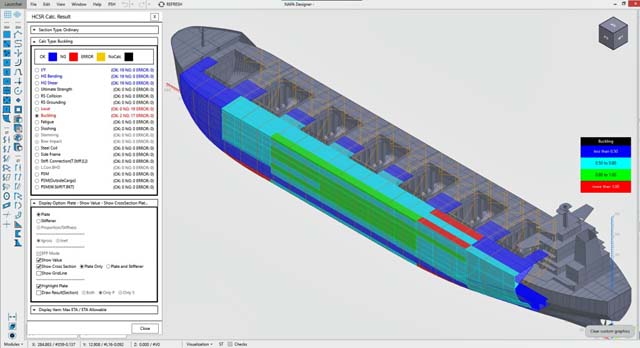Finland-based maritime software company NAPA and classification society ClassNK have strengthened their partnership to support the use of 3D models in the ship design approval process.
By streamlining data sharing between design and class approval software, this move brings 3D model-based approval one step closer to reality. It saves time and allows designers, engineers, and class societies to collaborate more effectively on vessel designs by using a consistent 3D model throughout.
The partnership will enhance data sharing between NAPA’s 3D Computer-aided design (CAD) software NAPA Designer and ClassNK’s design support software PrimeShip-HULL. The two systems will now be directly linked through NAPA’s Application Programming Interface (API) rather than relying on intermediate files.
This system will reduce the person-hours required for data linkage by more than 30% compared to the current method while also improving the accuracy of linkage and limiting the risk of errors.
This latest upgrade will enable closer collaboration between designers and class societies. It allows users of the PrimeShip-HULL system to carry out direct strength and prescriptive calculations on NAPA Designer seamlessly. Moreover, any amendment to dimensions following these calculations will be directly reflected in NAPA Designer’s 3D models. The new function is currently available for bulk carriers and oil tankers, applying the Common Structural Rules for Bulk Carriers and Oil Tankers (CSR BC & OT) requirements. The scope will be expanded to more ship types and structures in the future.
Tapio Hulkkonen, Director, Product Management, Design Solutions, NAPA, said: “The use of 3D models throughout the design process of a ship, including for the class approval process, is an integral part of the future of naval architecture. At NAPA, we are proud to drive this vital transition forward by developing solutions that enable all stakeholders to collaborate on the same 3D model, instead of wasting time and resources on multiple conversions to 2D drawings. This makes the design process more efficient, saves time and money, and reduces the risk of errors. At a time when ship designers and engineers need to innovate rapidly to create more efficient vessels, and continue to raise safety standards, this couldn’t be more important.”



